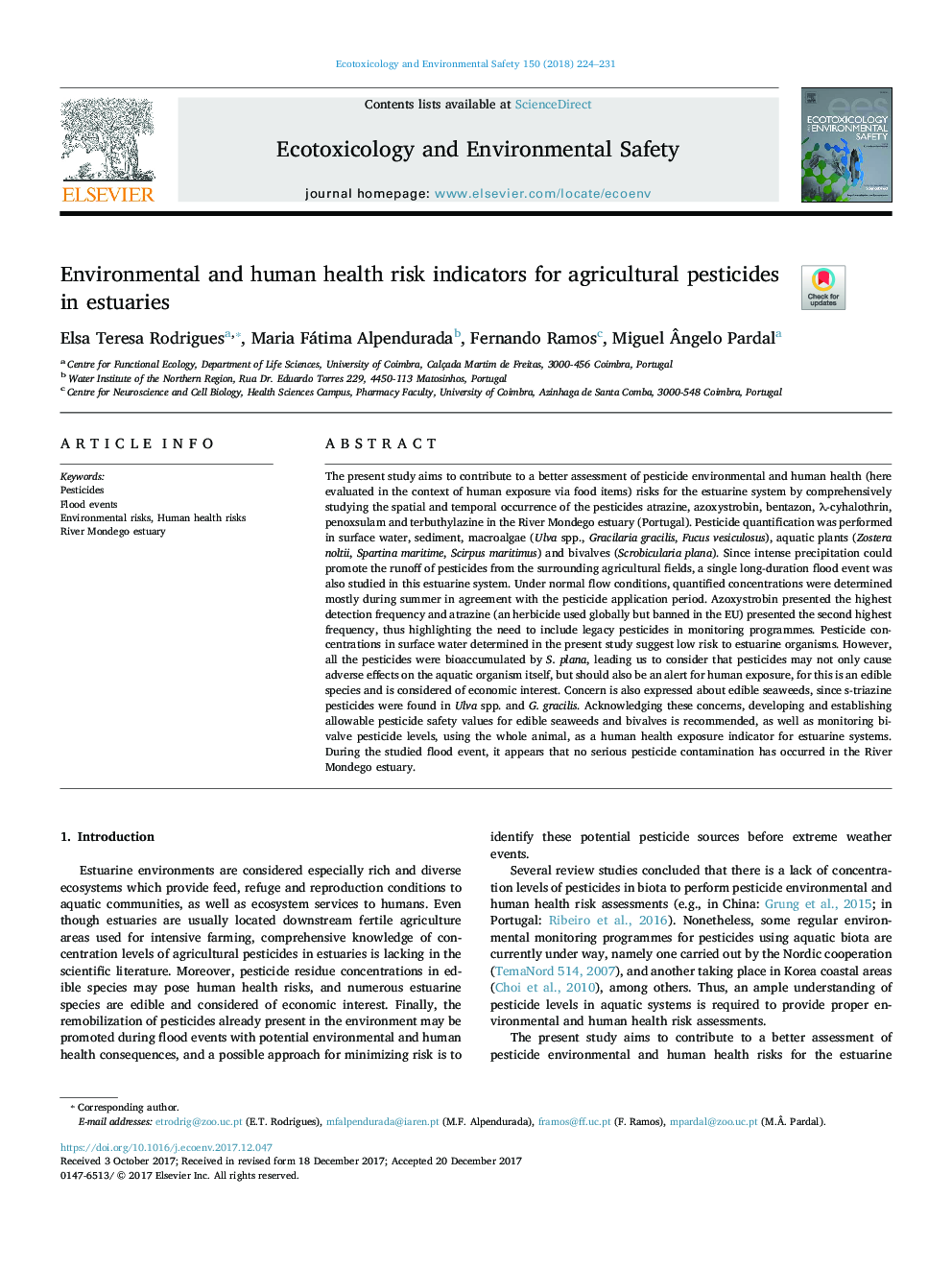| کد مقاله | کد نشریه | سال انتشار | مقاله انگلیسی | نسخه تمام متن |
|---|---|---|---|---|
| 8854451 | 1618914 | 2018 | 8 صفحه PDF | دانلود رایگان |
عنوان انگلیسی مقاله ISI
Environmental and human health risk indicators for agricultural pesticides in estuaries
ترجمه فارسی عنوان
شاخص های خطر زیست محیطی و سلامت انسان برای آفت کش ها کشاورزی در فواره ها
دانلود مقاله + سفارش ترجمه
دانلود مقاله ISI انگلیسی
رایگان برای ایرانیان
موضوعات مرتبط
علوم زیستی و بیوفناوری
علوم محیط زیست
شیمی زیست محیطی
چکیده انگلیسی
The present study aims to contribute to a better assessment of pesticide environmental and human health (here evaluated in the context of human exposure via food items) risks for the estuarine system by comprehensively studying the spatial and temporal occurrence of the pesticides atrazine, azoxystrobin, bentazon, λ-cyhalothrin, penoxsulam and terbuthylazine in the River Mondego estuary (Portugal). Pesticide quantification was performed in surface water, sediment, macroalgae (Ulva spp., Gracilaria gracilis, Fucus vesiculosus), aquatic plants (Zostera noltii, Spartina maritime, Scirpus maritimus) and bivalves (Scrobicularia plana). Since intense precipitation could promote the runoff of pesticides from the surrounding agricultural fields, a single long-duration flood event was also studied in this estuarine system. Under normal flow conditions, quantified concentrations were determined mostly during summer in agreement with the pesticide application period. Azoxystrobin presented the highest detection frequency and atrazine (an herbicide used globally but banned in the EU) presented the second highest frequency, thus highlighting the need to include legacy pesticides in monitoring programmes. Pesticide concentrations in surface water determined in the present study suggest low risk to estuarine organisms. However, all the pesticides were bioaccumulated by S. plana, leading us to consider that pesticides may not only cause adverse effects on the aquatic organism itself, but should also be an alert for human exposure, for this is an edible species and is considered of economic interest. Concern is also expressed about edible seaweeds, since s-triazine pesticides were found in Ulva spp. and G. gracilis. Acknowledging these concerns, developing and establishing allowable pesticide safety values for edible seaweeds and bivalves is recommended, as well as monitoring bivalve pesticide levels, using the whole animal, as a human health exposure indicator for estuarine systems. During the studied flood event, it appears that no serious pesticide contamination has occurred in the River Mondego estuary.
ناشر
Database: Elsevier - ScienceDirect (ساینس دایرکت)
Journal: Ecotoxicology and Environmental Safety - Volume 150, 15 April 2018, Pages 224-231
Journal: Ecotoxicology and Environmental Safety - Volume 150, 15 April 2018, Pages 224-231
نویسندگان
Elsa Teresa Rodrigues, Maria Fátima Alpendurada, Fernando Ramos, Miguel Ãngelo Pardal,
